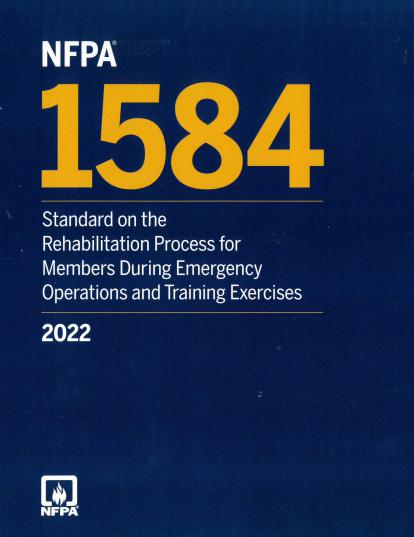Help protect the health and safety of emergency responders with NFPA 1584, Standard on the Rehabilitation Process for Members During Emergency Operations and Training Exercises.
First responders face many risks during emergency operations and training exercises, including dehydration and electrolyte imbalances due to overexertion. To help keep personnel hydrated and healthy, departments should follow a systematic and organized approach for rehabilitation during emergency operations and training exercises. Make this process an integral component of both an occupational safety and health program and incident scene management using NFPA 1584, Standard on the Rehabilitation Process for Members During Emergency Operations and Training Exercises.
Several significant additions and updates were made to the 2022 edition of NFPA 1584, Standard on the Rehabilitation Process for Members During Emergency Operations and Training Exercises, including the addition of new chapters on preliminary exposure reduction and post-incident recovery. The updated edition also includes new and expanded coverage of prehabilitation and rehabilitation at events, as well as new and revised requirements that address contamination control measures. A new reserved chapter on process implementation—which will be developed in future editions—was also created.
This safety standard reflects the current science and knowledge on the rehabilitation of fire service members. By updating to the latest edition, your department can help ensure fire service members have procedures in place to keep them hydrated and healthy—and ready to protect your community.
Additions and updates made to the 2022 edition include:
- the addition of new chapters on preliminary exposure reduction and post-incident recovery.
- new and expanded coverage of prehabilitation and rehabilitation at events, as well as new and revised requirements that address contamination control measures.
- A new reserved chapter on process implementation—which will be developed in future editions—was also created.
This safety standard reflects the current science and knowledge on the rehabilitation of fire service members. By updating to the latest edition, your department can help ensure fire service members have procedures in place to keep them hydrated and healthy—and ready to protect your community.


